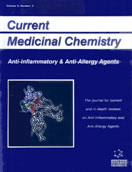Abstract
Somatostatin binds to five receptors sst1-sst5, belonging to the G-protein coupled receptor super family. So far, only sst2 preferring analogs, presenting also high affinity for sst5 and moderate affinity for sst3, are available for clinical use to treat certain hormonal disorders and tumors (pituitary adenomas and gastroenteropancreatic tumors) with longlasting efficacy and minimal side-effects as observed in patients with acromegaly. Recent strategies based on sequence modifications, such as D-substitutions, deletions, backbone cyclisation technology, novel thiourea scaffolds, along with combinatorial chemistry, lead to the discovery of peptide and non peptide compounds, with either combined affinities for two or more receptor subtypes, or exclusive selectivity for one of them, or a universal profile binding, more stable than the natural peptides. A large field of potential novel drugs has been open. Molecular mechanisms for anti-inflammatory properties of somatostatin and analogs involve anti-secretory, anti-proliferative and anti-angiogenic properties, which may be receptor selective. The great diversity of new analogs and major progress in the understanding of biological activity of somatostatin and receptors support strategies for targeting somatostatin to treat some chronic inflammatory diseases which are still a major cause of disability.
Keywords: somatostatin, somatostatin receptors, somatostatin analogs, chronic inflammatory diseases, cytokines, apoptosis, inhibition of cell proliferation, angiogenesis
 8
8

